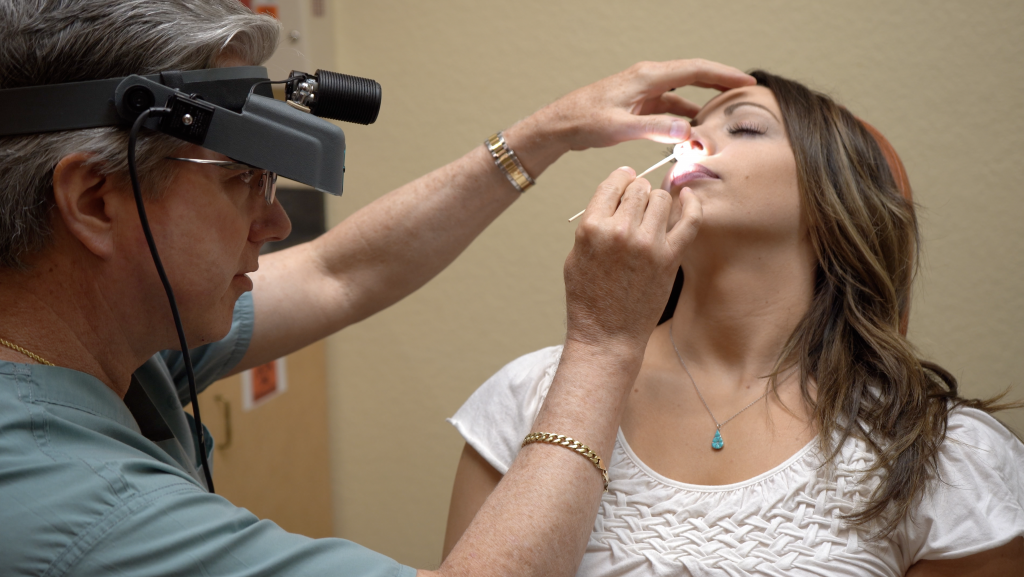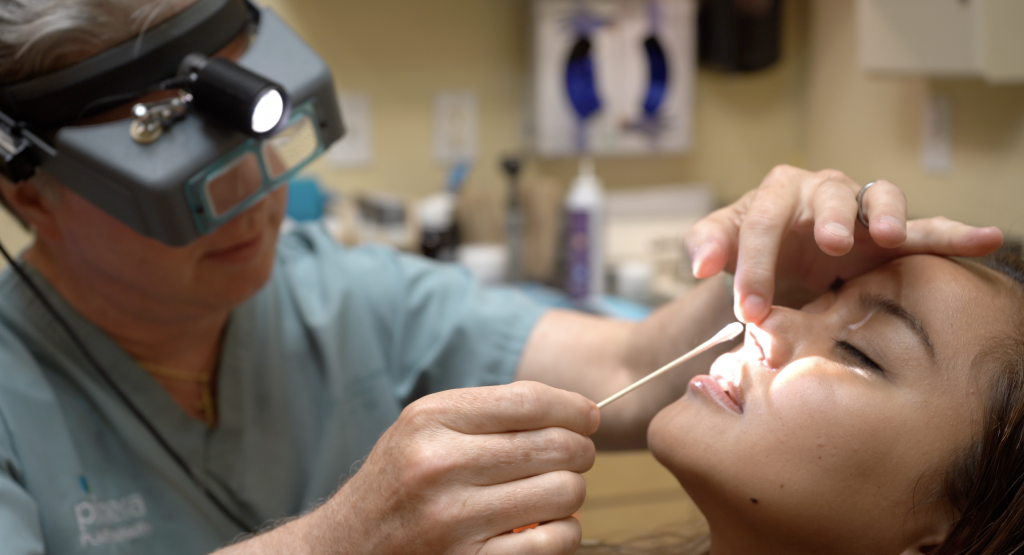I am frequently asked about nonsurgical rhinoplasty using injectables at my Orlando practice since it has been popularized in the news and on social media. The procedure is entirely different than cosmetic surgical rhinoplasty, which is a surgical procedure for correcting and reconstructing the nose.
Below, I’ll break down the differences between cosmetic surgical rhinoplasty and non-surgical rhinoplasty and provide advice to help you decide which option may be right for you.
What Is Non-Surgical Rhinoplasty?
Non-surgical rhinoplasty is a minimally invasive procedure that involves injecting dermal fillers such as Restylane® Lyft into the nose to alter its shape, the nostrils, or bridge height. Patients seeking nonsurgical rhinoplasty typically have a straight nose with a small hump on the profile view. Correction for this involves placing a small amount of filler above the hump to smooth out the profile, giving the nose an enlarged look. However, it conceals the hump.
Nonsurgical rhinoplasty is also implemented to correct a small depression in the nose following surgical rhinoplasty that can be more easily treated with filler. This is a rare occurrence in my practice, however.
A filler rhinoplasty might be acceptable for a short-term solution. But, the nose is actually being enlarged, which is the complete opposite of cosmetic surgical rhinoplasty. In addition, a nonsurgical rhinoplasty has significant limitations, and the results are of limited duration, typically between 3-6 months.
Nonsurgical rhinoplasty cannot help improve the following areas, which are typically corrected permanently and aesthetically with a cosmetic (surgical) rhinoplasty. :
- A crooked nose
- A deviated septum
- A twisted tip
- Wide nostrils
- A wide bridge or bulbous tip
What Is Cosmetic Surgical Rhinoplasty?
 Cosmetic surgical rhinoplasty is a surgical procedure that involves making incisions, typically inside the nostrils to reshape the nose. The tissue is rearranged and then supported with a splint following the completion of the surgery. In cosmetic surgical rhinoplasty, the nose is generally reduced in size and made to look more sleek, slender, or balanced.
Cosmetic surgical rhinoplasty is a surgical procedure that involves making incisions, typically inside the nostrils to reshape the nose. The tissue is rearranged and then supported with a splint following the completion of the surgery. In cosmetic surgical rhinoplasty, the nose is generally reduced in size and made to look more sleek, slender, or balanced.
Cosmetic rhinoplasty can improve the appearance and proportion of the nose – enhancing facial harmony and self-confidence. It may also improve breathing problems or correct abnormalities caused by trauma or a birth defect, and the procedure can change the nose’s overall size, tip, bridge, and nostrils. You can read more about the procedure and 6 surprising facts about rhinoplasty in a related blog post.
What Are the Drawbacks of Nonsurgical Rhinoplasty?
It has been my experience that nonsurgical rhinoplasty is typically performed by non-core, non-specialty trained, mid-level providers. Generally speaking, such individuals have very little understanding of the surgical anatomy of the nose. Therefore, it is important to keep in mind the risks associated with nonsurgical rhinoplasty, including:
- Lumps
- Discolorations of the skin
- Asymmetry
- Infection
- Variations in shape each time
- Skin necrosis
It is critical to understand the blood supply to the nose to properly administer nonsurgical injections and to avoid the most severe complication of skin necrosis. Necrosis is the death of cells in living tissue caused by external factors such as infection, trauma, or toxins. Typically, cells that die as a result of necrosis lead to a buildup of dead tissue and cell debris. Moreover, necrotic tissue can delay wound healing,

Ideally, nonsurgical rhinoplasty is performed in the hands of a board-certified facial plastic and reconstructive surgeon or a general plastic surgeon having extensive experience in surgical rhinoplasty with the ability to correct any problems with surgery.
Necrosis can be attributed to one of two factors—an interruption of vascular supply due to compression or frank obstruction of vessels by direct injection of the material into a vessel itself. Vascular occlusion can occur if a filler is injected into a blood vessel or when sufficient quantity is injected near the vessel to cause a compression blockage. The two types are arterial (generally an acute onset – during injection) and venous (generally a delayed onset – often when the patient has left the clinic), although the two are not mutually exclusive.
Arterial occlusion is a more serious complication and can potentially be very damaging, leading to ischemia, tissue degradation, and necrosis. Other secondary (and later stage) tissue necrosis (which generally develops a few days after the initial complication), and scarring, which is the end stage of the necrosis and healing process. You can learn more about some of the risks of nonsurgical rhinoplasty in this ENT Today article.
Overall, I generally advise patients who are interested in a non surgical nose job at my Orlando-area practice to carefully review the risks, benefits, and cost differences associated with surgical versus nonsurgical rhinoplasty. It is wise to keep in mind that nonsurgical rhinoplasty may involve many years or even a lifetime of continued injections with unknown runaway costs and recovery. This stands in contrast to cosmetic surgical rhinoplasty, which is performed a single time with one recovery period, one initial cost, and can improve all the areas of the nose, including functional breathing improvement.
If you would like to discuss your rhinoplasty options with a double-board certified facial plastic surgeon, call my Lake Mary, FL, office at (407) 333-3040 or use our online contact form to request a consultation.

Leave a Reply